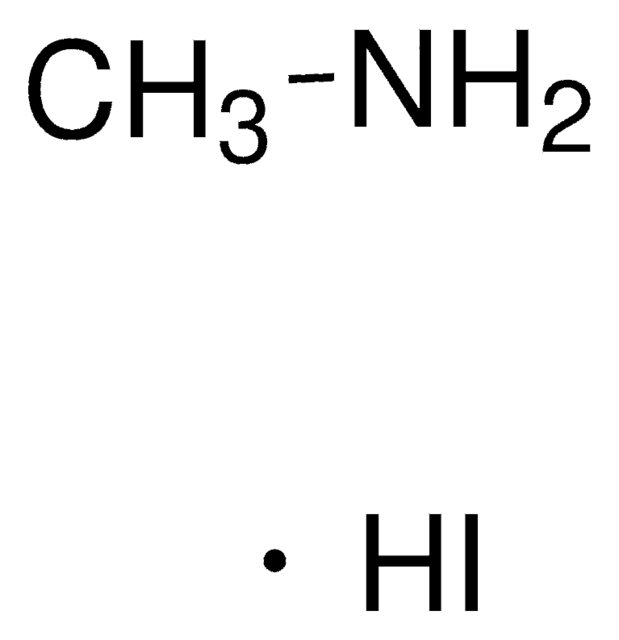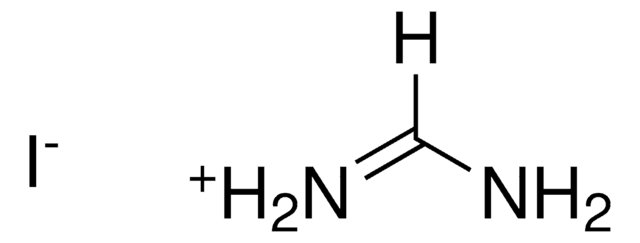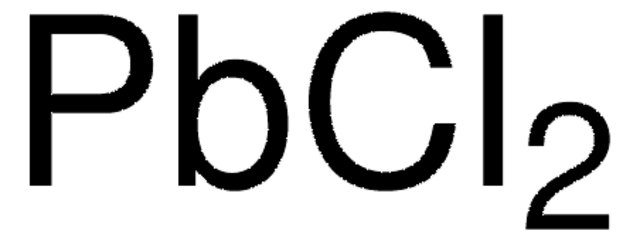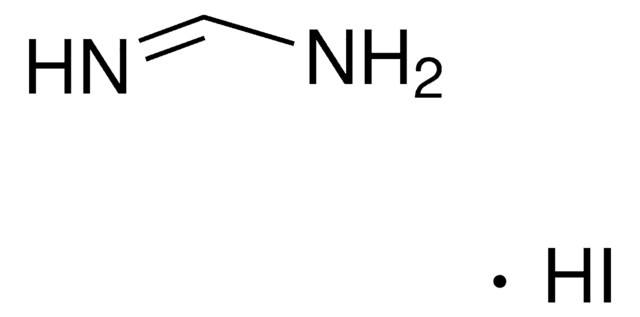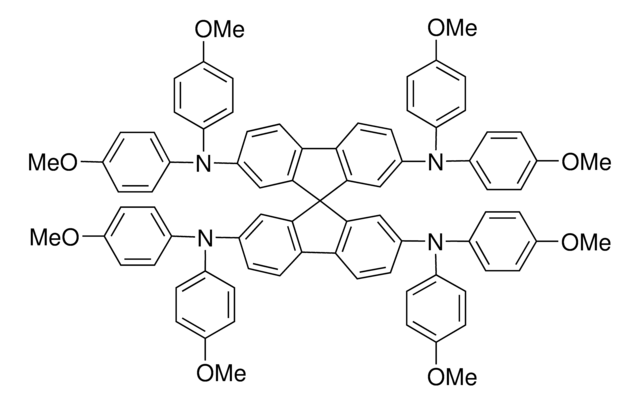900168
Lead(II) iodide
99.999% trace metals basis, perovskite grade
Synonym(s):
Lead diiodide
About This Item
Recommended Products
description
Powder or beads
Quality Level
assay
99.999% trace metals basis
form
beads
bp
954 °C (lit.)
mp
402 °C (lit.)
density
6.16 g/mL at 25 °C (lit.)
SMILES string
I[PbH2]I
InChI
1S/2HI.Pb/h2*1H;/q;;+2/p-2
InChI key
RQQRAHKHDFPBMC-UHFFFAOYSA-L
Looking for similar products? Visit Product Comparison Guide
Related Categories
General description
Application
Other Notes
signalword
Danger
Hazard Classifications
Acute Tox. 4 Inhalation - Acute Tox. 4 Oral - Aquatic Acute 1 - Aquatic Chronic 1 - Repr. 1A - STOT RE 2
Storage Class
6.1C - Combustible, acute toxic Cat.3 / toxic compounds or compounds which causing chronic effects
wgk_germany
WGK 3
flash_point_f
Not applicable
flash_point_c
Not applicable
Certificates of Analysis (COA)
Search for Certificates of Analysis (COA) by entering the products Lot/Batch Number. Lot and Batch Numbers can be found on a product’s label following the words ‘Lot’ or ‘Batch’.
Already Own This Product?
Find documentation for the products that you have recently purchased in the Document Library.
Customers Also Viewed
Our team of scientists has experience in all areas of research including Life Science, Material Science, Chemical Synthesis, Chromatography, Analytical and many others.
Contact Technical Service


